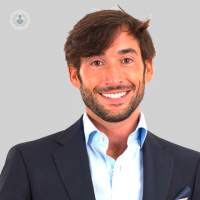El tratamiento ortodóntico del paciente periodontal con pérdida severa de inserción
Written by:In today's society there has been a significant increase in aesthetic demand. More and more adult patients want to undergo orthodontic treatment to improve their teeth , restore their periodontal health and masticatory and aesthetic functions .
At the same time, age is related to the incidence of periodontal disease and loss of insertion, so these patients are posed for correction.
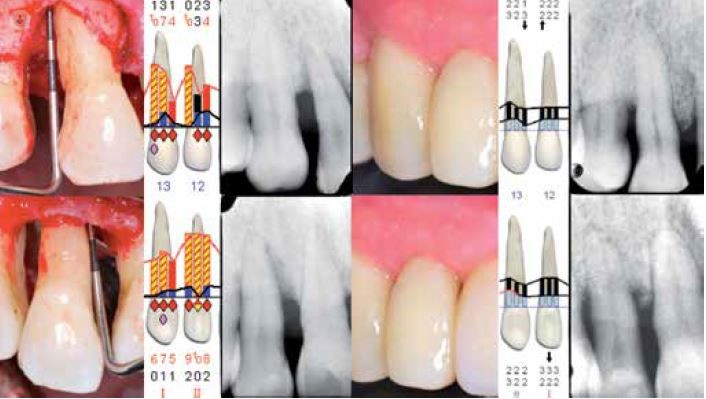
Orthodontic treatment: symptoms of severe insertion loss
- Fanification of anterior teeth.
- Dental Extrusion.
- Irregularity of gingival margins.
- Dental migration.
- Occlusal trauma.
- Loss of teeth.
These circumstances increase the appearance of malocclusions and severe malpositions , so that orthodontic treatment becomes a necessary requirement for successful treatment of patients.
How Periodontal Treatment Is Organized
The treatment must be carried out between the periodontist , the orthodontist and the restorer , who will review among them the impact of orthodontic treatment in patients with severe loss of insertion.
Although combining periodontal and orthodontic treatment in this type of patient has benefits, there is also controversy as to the negative effects that orthodontic therapy could have on the peridontium.
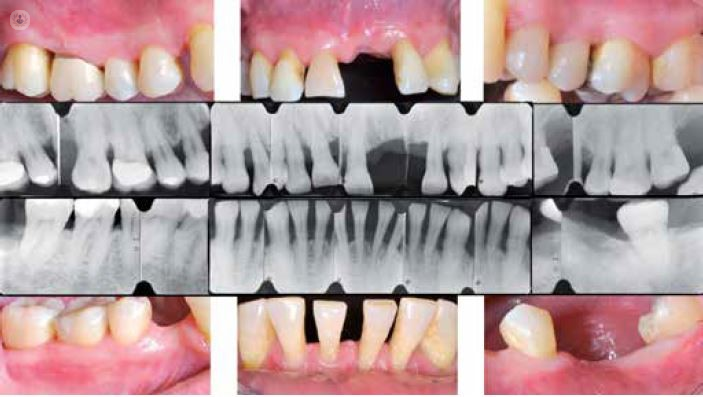
Orthodontic treatment on the periodontium
This treatment facilitates bacterial aggregation and increases the risk of transition to a more periodontal-pathogenic flora, generating forces that produce bone resorption .
However, it has been shown that with constant plaque control , patients with reduced but healthy periodontium can be treated orthodontically without worsening their periodontal status.
Despite the increased risk of plaque accumulation, there is no irreversible loss of clinically significant insertion following orthodontic treatment in periodontal patients.
Restrictions from the orthodontic point of view
There are no restrictions on the orthodontic treatment of adult patients with severe insertion loss, in fact it may be advisable to apply orthodontics to improve the appearance and functions of periodontal patients. Of course, it is important to use anchoring systems, such as tubes , or even adhesion for greater control of dental position in these cases, such as:
- Micro-screws
- Mini-boards
- Dental implants
Orthodontic treatment: movement of teeth with severe insertion loss
In teeth with infra-red defects, its movement occasionally generates the increase of insertion , giving rise to a more favorable anatomy to carry out a procedure of periodontal regeneration.
Also, there were no complications during orthodontic treatment in teeth with previous periodontal regenerations. Likewise, it is advisable not to undergo treatment until six months after the regeneration .
In the case of orthodontic extrusion , when there is no inflammation, the infra-osseous component of the defect is reduced by the extrusion movements.
Orthodontic treatment: what is pathological dental migration?
It is a common complication in moderate and advanced periodontitis , being the usual reason why these patients want to undergo orthodontic treatment.
Pathological dental migration stands out for significant changes in the position of the teeth as a result of the disruption of the forces that cause the teeth to be kept in a correct position. This is manifested clinically by the extrusion and fanning of the anterior teeth, leading to the appearance of diastemas and increased overbite.
Orthodontic treatment: how does pathological dental migration work?
Treatment begins with complete periodontal treatment , eliminating infection and inflammation of periodontal tissues, and correcting possible bone defects. Then the orthodontic therapy is carried out, and to finish, the lost dentition is restored when placing dental implants and / or protodonic restorations. In cases where there is a localized recession, mucogingival techniques of root coverage may be applied before orthodontic treatment.
It is common, in adult periodontal patients, exposure in excessive gingiva when smiling. This is mainly due to the extrusion of the anterior superior teeth, so that one of the goals of orthodontic treatment will be slow dental intrusion to reduce or eliminate excess gingiva.
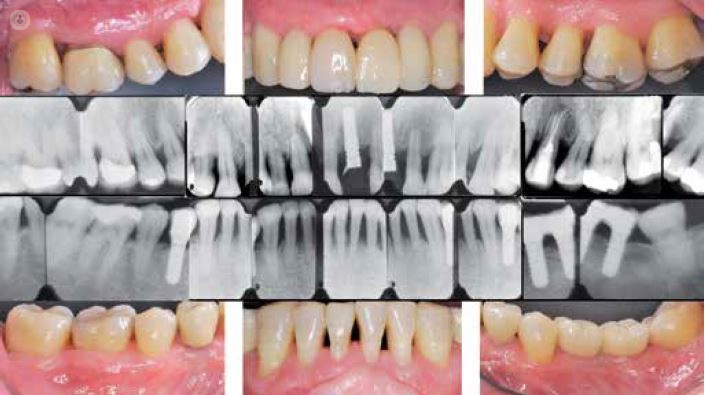
Orthodontic treatment: an interdisciplinary approach of the periodontal patient
Throughout the orthodontic treatment in patients with loss of severe periodontal insertion, the occurrence of incidences related to aesthetics is frequent, and is related to loss of papillae, discrepancy of gingival margins or excess gingival exposure.
The reasons that give rise to this side effect are: loss of periodontal insertion, incorrect angulation of roots and crowns, and triangular morphology of teeth .
For periodontal patients with severe insertion loss, orthodontic treatment should be mixed with restorative procedures. In this way, the point of contact will be apically reduced by reducing the pocket and increasing the harmony between the soft tissue and the teeth .
The gingival margins of the anterior-superior teeth are a relevant aspect in the aesthetics of the smile. The gingival contour should conform to the natural anatomical profile of the teeth's amelocementary line, resulting in a scalloping of the gingival tissue filling the interdental spaces. This is very frequent in patients with severe insertion loss, therefore, orthodontics has within its objectives to achieve a good alignment of the gingival margins through slight extrusion and intrusion movements.
Prevention of relapse after orthodontic treatment
After orthodontic treatment, the remodeling of the supra-alveolar fibers continues between four and six months. For this reason, a retention period of at least 12 months after orthodontics is recommended in order to establish the new tooth position achieved after the remodeling of the periodontal fibers.
Fixed retention after orthodontics is essential to prevent relapse in those with severe loss of insertion. The best way to do this is by splinting from canine to canine, using hoof adhered to the lingual faces of the teeth. Removable retainers are discouraged in these patients because of the lack of control of the forces that can act on the periodontium, and also by the intermittence of the same.
Discussion
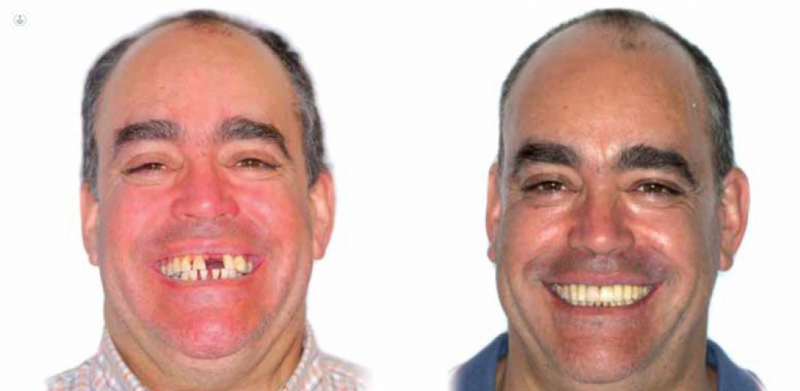
Orthodontic treatment of patients with severe insertion loss is not without risk. For this reason, it is necessary to collaborate in an interdisciplinary way between the periodontist, the orthodontist and the restorer. The patient should also be involved and monitor plaque levels and gingival inflammation.
Despite the existence of series of clinical cases, and based on clinical experience, the scientific evidence to know the appropriate time and sequence of successful treatment in the combined periodontal and orthodontic treatment is not assured .
conclusion
Orthodontic treatment in patients with severe loss of insertion is not contraindicated. Conversely, in many cynical situations arising from periodontal disease, restoration of the health, function and aesthetics of patients is permitted thanks to interdisciplinary collaboration between specialists. For more information, consult a specialist in Dentistry .
** In the elaboration of this article have participated the Dra. Esperanza Gross y la Dra. Conchita Martín.

